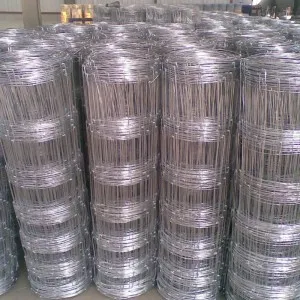Understanding GI Wire The Essential Tool in Construction and Manufacturing
GI wire, short for Galvanized Iron wire, is a critical component in various industrial and construction applications. The process of galvanization involves coating iron or steel with a layer of zinc to enhance its resistance to corrosion and rust. This characteristic makes GI wire an ideal choice for outdoor use and in environments where moisture is prevalent.
Key Properties of GI Wire
One of the most significant traits of GI wire is its durability. The galvanization process forms a protective barrier that not only prevents rust but also enhances the wire's overall strength. This makes it suitable for various applications, including fencing, construction supports, and as a material in crafting and engineering projects. Additionally, GI wire is known for its flexibility, making it easy to bend and shape without compromising its structural integrity.
Applications of GI Wire
1. Fencing GI wire is extensively used in the construction of fences, serving both agricultural and residential purposes. It provides a sturdy and reliable barrier against intruders while being cost-effective. Barbed wire, made from GI wire, is particularly popular for livestock enclosures and perimeters of properties.
2. Construction In the construction industry, GI wire is often used as tie wire to secure rebar at construction sites. It plays a vital role in ensuring that the concrete structure holds together, providing stability and safety. Additionally, it is utilized in wire mesh for reinforcing concrete slabs and walls.
gi wire 10

3. Crafting and DIY Projects The versatility of GI wire makes it a favorite among crafters and DIY enthusiasts. Its pliability allows for creative applications ranging from making wreaths to constructing sculptures. Moreover, GI wire is affordable and accessible, which adds to its appeal for hobbyists.
4. Industrial Uses In various industries, GI wire is used for packaging, binding, and as part of machinery. Its resistance to wear and tear in industrial settings allows it to perform reliably, reducing the need for frequent replacements.
Environmental Considerations
While GI wire offers numerous benefits, it is essential to note the environmental implications of its production and disposal. The galvanization process can involve harmful chemicals, and the production of iron and steel contributes to carbon emissions. Therefore, sustainability practices are crucial in the wire manufacturing process. Recycling GI wire is encouraged, as it not only reduces waste but also minimizes the resources needed to produce new wire.
Conclusion
GI wire is an invaluable material that underscores the intersection of functionality, durability, and versatility in construction and manufacturing. Its applications span across fencing, construction support, crafting, and industrial uses, making it a staple in both commercial and residential settings. As industries continue to innovate and strive for sustainability, the evolution of GI wire and its applications will likely follow suit. Whether you're a contractor, a farmer, or a hobbyist, understanding the benefits and uses of GI wire can empower you to make informed decisions in your projects. Its enduring strength and resistance to the elements ensure that it remains a trusted material for years to come, proving that sometimes the simplest solutions can be the most effective.

















